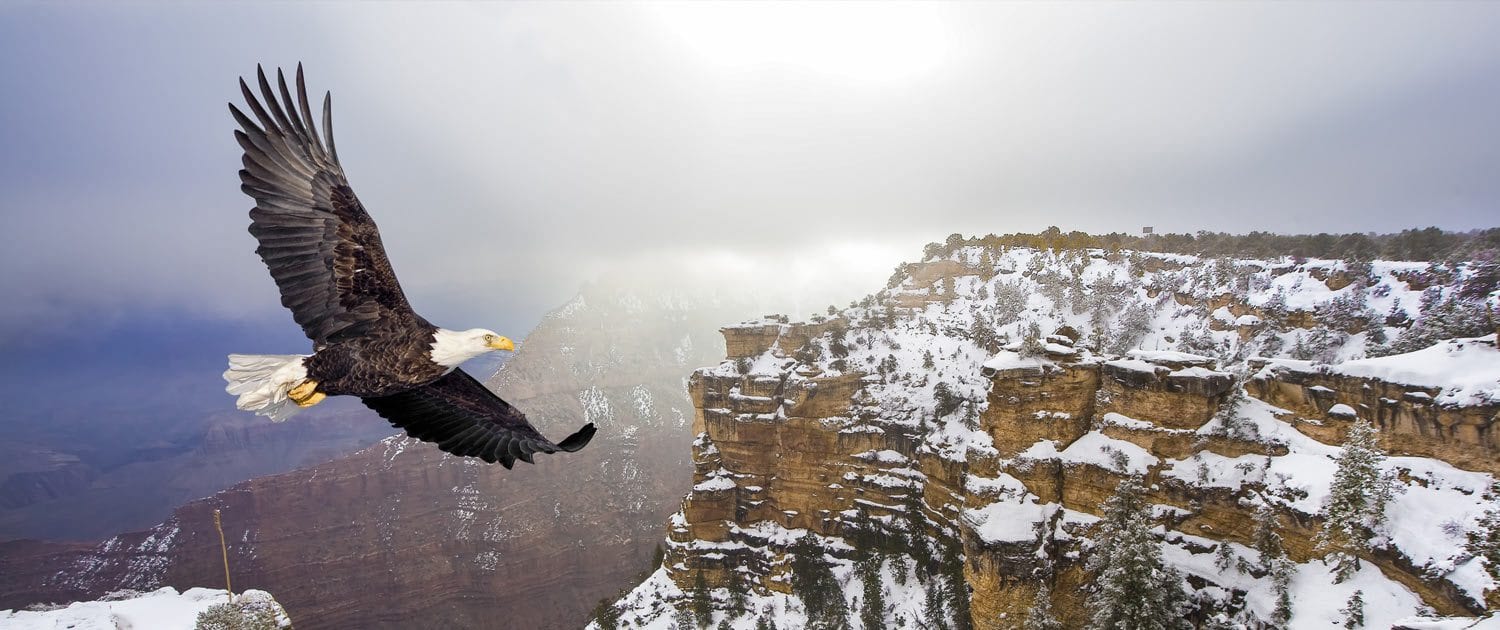Home to reptiles, fish, and mammals, birds and more, the Grand Canyon is teeming with wildlife and the abundant vegetation that helps support the entire ecosystem.
Guided tours allow visitors to experience the Park and observer many of the animals in their natural habitat. The tour guides are knowledgeable about the creatures that inhabit the Grand Canyon and can also tell you about the plant life that surrounds the Park. The animals found in the Grand Canyon are vast and some of the animals can be found on the endangered species lists. For example: The Humpback Chub and Razorback Sucker are fish that are on the endangered species list. Visitors are advised to never feed or approach the wild animals as attacks can occur.
Here are only a few of the vast amount of mammals you may observe at the Park:
- Coyotes
- Bats
- Squirrels
- Raccoon
- Bobcat
- Gray Fox
- Mountain Lion
- Beavers
- Mice
- Mule Deer
- Bighorn Sheep
- Cotton Tail Rabbits
- Ringtail Cats
Birds can be seen throughout the Park and avid birdwatchers often are overwhelmed with the varieties of birds found within the Park. Bird enthusiasts often visit the Grand Canyon and take one of the guided tours to observe birds like these:
- Bald Eagles
- Golden Eagles
- Red-Tailed Hawks
- Blue Jays (and other varieties)
- Ravens
- Wild Turkeys
- Turkey Vultures
- California Condor
Reptiles are also part of the animal kingdom at the Grand Canyon. Quite a few species of reptiles can be found and many can be observed on a hiking excursion. While caution needs to be taken for the poisonous varieties – tour guides are well versed in how to handle any situation and are aware of how to avoid those creatures that might attack or be dangerous to visitors.
A few Reptiles one might observe:
- Chuckwalla Lizard
- Short-Horned Lizard
- Salamanders
- Toads
- Grand Canyon Rattler
- Diamond Back Rattler
With so many animals in the park, plant life is also surprisingly abundant, especially closer to the Colorado River’s edge. There are approximately 12 species of endemic plants that only grow in the park and over 1700 different varieties of vascular plants, over 160 fungi and over 190 lichen varieties that flourish at the Grand Canyon.
Many botanists come to discover the ecosystem involving the plants – with scientists studying the vegetation of the Canyon. The plants are influenced by many factors, including climate, geology of the area and the animals that feed on some of the plants. The vast differences of plants at different locations within the park are based on water resource, elevation and the climate surrounding the area.
Cactus plants, wildflowers, trees, grasses, shrubs, fungi and lichen are all found at varying levels within the canyon – most of them are found closer to the River’s edge. The higher the elevation, the more desert-like the plants become on the plateaus and above 6,500 feet, you will find wooded areas of Pine, oak mahogany and more.
The beauty of the Canyon’s vegetation is often breathtaking, from the sparse desert type of plants to lush flora near the water’s edge and all the way to the higher elevation wooded areas.
- Coyote Willow
- Catclaw Acacia
- Sagebrush
- Ocotillo
- Arrowweed
- Western Honey Mesquite
- Seep Willow
- Yarrow
- Evening Primrose
- White Violet
- Globe Mallow
- Red Columbine
- Palmer Lupine
- Watercress
- Rocky Mountain Iris
Guided tours are usually the best way to learn about the animals and plants of the Grand Canyon. The tour guides are well versed in the dynamics of the park settings and are quite knowledgeable about the vegetation and animals.
Suggested tours to take to learn about the wildlife and plant life of the park:


